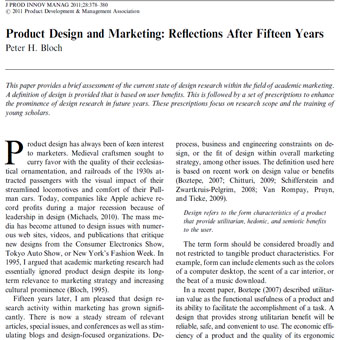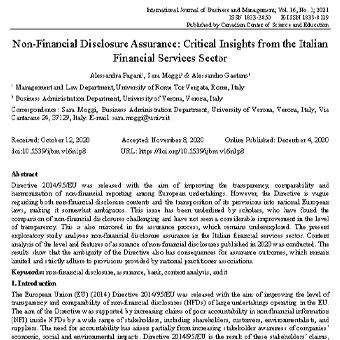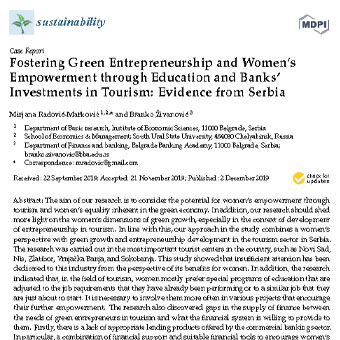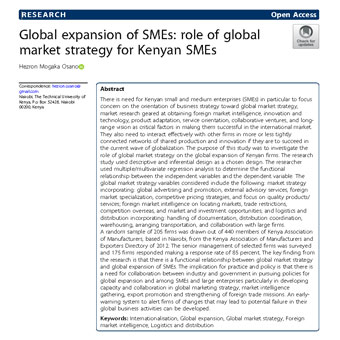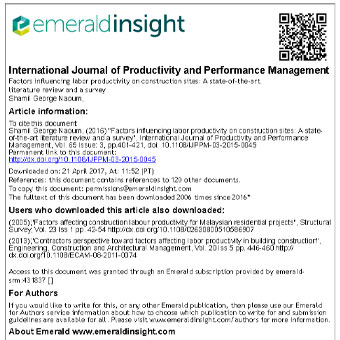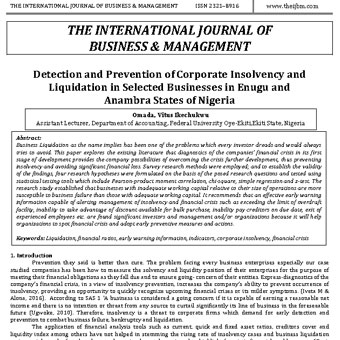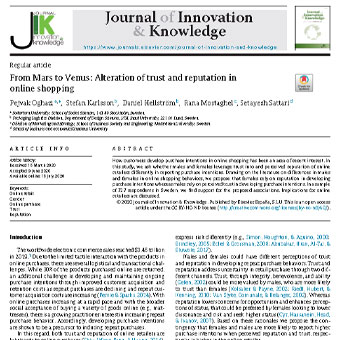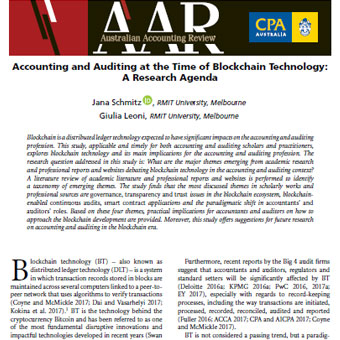عنوان فارسی مقاله:طراحی و بازاریابی محصول: دیدگاهها پس از پانزده سال
چکیده
این مقاله، یک ارزیابی مختصر و کوتاه از وضعیت فعلی تحقیقات طراحی در زمینهی بازاریابی علمی و آکادمیک ارائه میکند. یک تعریف از طراحی بر اساس مزایای کاربران ارائه میشود. سپس، یک مجموعه از دستور العمل ها برای بهبود برجستگی و اهمیت تحقیقات طراحی در سالهای آینده ارائه میشود. این دستور العمل ها بر حوزهی تحقیق و آموزش محققان جوان متمرکز است. طراحی محصول همیشه برای بازاریابان جذاب بوده است. صنعت گران قرون وسطایی به دنبال ایجاد طرحهایی با بهبود کیفیت تزیینات کلیسایی و راه آهنها در دههی ۱۹۳۰ برای جذب مسافران با تأثیر بصری لوکوموتیوهای بخار و راحتی واگنها بودهاند. امروزه، شرکتهایی نظیر اپل به مزایایی در طی رکود مالی بزرگ به دلیل رهبری در طراحی، رسیدهاند (مایکل ۲۰۱۰). رسانههای جمعی به مسائل طراحی با وب سایتهای مختلف پرداختهاند و مقالات معمولاً طرحهای جدید را از شوهای الکترونیکی مصرف کننده، شوی خودروی توکیو، هفتهی مد نیویورک نقد کردهاند. در ۱۹۹۵، استدلال من این است تحقیقات بازاریاب علمی، طراحی محصول را علی رغم اهمیت بلند مدت آن برای استراتژی بازاریابی و افزایش اهمیت فرهنگی، نادیده گرفتهاند (بلوک۱۹۹۵).
کلیه مقالات مرتبط را میتوانید در بخش ترجمه مقالات اقتصاد ملاحظه کنید.
- لینک دانلود فایل بلافاصله بعد از پرداخت وجه به نمایش در خواهد آمد.
- همچنین لینک دانلود به ایمیل شما ارسال خواهد شد به همین دلیل ایمیل خود را به دقت وارد نمایید.
- ممکن است ایمیل ارسالی به پوشه اسپم یا Bulk ایمیل شما ارسال شده باشد.
- در صورتی که به هر دلیلی موفق به دانلود فایل مورد نظر نشدید با ما تماس بگیرید.
 متن به فارسی | ترجمه مقالات و متون علمی | ترجمه و دانلود مقالات و انواع متون علمی و ادبی و پذیرش سفارش ترجمه
متن به فارسی | ترجمه مقالات و متون علمی | ترجمه و دانلود مقالات و انواع متون علمی و ادبی و پذیرش سفارش ترجمه
